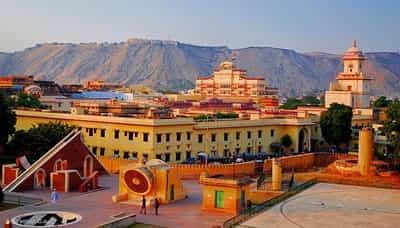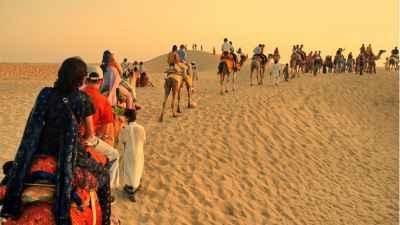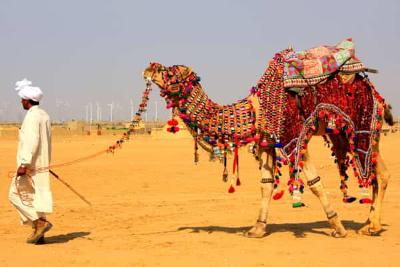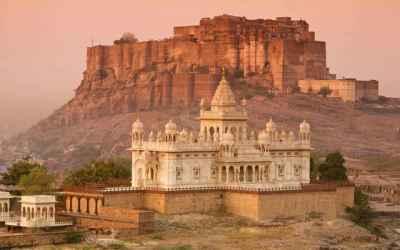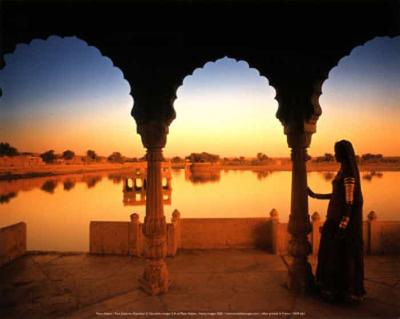Painting the Town: The Murals and Frescoes of Shekhawati
The Shekhawati region in Rajasthan, India is renowned for its stunning collection of murals and frescoes. These artworks can be found throughout the towns and villages of Shekhawati, transforming the region into an open-air art gallery. If you are an art lover or simply appreciate the beauty of vibrant colors, a visit to Shekhawati should be at the top of your travel bucket list. In this blog post, we will explore the history and significance of the murals and frescoes of Shekhawati.
A Glimpse into the Past
The Shekhawati region, located in the north-eastern part of Rajasthan, was once a prosperous trading hub during the 18th and 19th centuries. The wealthy merchants and traders of the region built magnificent havelis (mansions) adorned with ornate frescoes and murals. These intricate artworks served multiple purposes - to showcase the prosperity and social status of the owners, to provide aesthetic pleasure, and to educate the visitors about religious and social themes.
The murals and frescoes of Shekhawati reflect a blend of Mughal, Rajput, and European artistic styles. The vibrant colors, intricate detailing, and the sheer opulence of these artworks are a testament to the wealth and artistic prowess of the bygone era.
Exploring the Artistic Treasures
Shekhawati is famous for its numerous havelis, each boasting a unique collection of murals and frescoes. Some of the must-visit towns in the region include Mandawa, Nawalgarh, and Fatehpur.
Mandawa
Mandawa, also known as the open art gallery of Rajasthan, is home to some of the most stunning havelis and frescoes in Shekhawati. The town's narrow lanes are lined with havelis, each more beautiful than the last. Some of the noteworthy havelis in Mandawa include the Hanuman Prasad Goenka Haveli, Murmuria Haveli, and Jhunjhunwala Haveli, among others. These havelis feature mesmerizing frescoes depicting scenes from mythology, daily life, and historical events.
Nawalgarh
Nawalgarh is another gem in the Shekhawati region, known for its splendid havelis and murals. The Roop Niwas Palace, built by Thakur Roop Singh, is a must-visit for its remarkable frescoes. The frescoes of Anandi Lal Poddar Haveli and Morarka Haveli are also worth exploring. The intricate artwork on these havelis narrates stories of bravery, romance, and spiritual devotion.
Fatehpur
Fatehpur, though less popular than Mandawa and Nawalgarh, is equally rich in artistic treasures. The havelis of Fatehpur display a unique style of frescoes that mainly depict mythological figures, animals, and flora. The frescoes of Mahavir Prasad Goenka Haveli and Harikrishnan Das Sarogi Haveli are particularly noteworthy.
The Preservation of Shekhawati's Artistic Heritage
The murals and frescoes of Shekhawati faced neglect and deterioration over the years. However, in recent times, efforts have been made to conserve and restore these artistic gems. Various organizations, both governmental and non-governmental, have taken up the task of preserving the havelis and their artwork.
The restoration work involves cleaning the frescoes, repairing damages, and ensuring proper maintenance. Additionally, awareness campaigns have been launched to educate locals and tourists about the importance of preserving this unique cultural heritage.
In Conclusion
Exploring the murals and frescoes of Shekhawati is like stepping into a vibrant and captivating world of art and history. These exquisite artworks provide a glimpse into the opulent lifestyles and rich cultural heritage of the region's past. A visit to Shekhawati is a visual treat for art enthusiasts and a truly enriching experience for all travelers. So, make sure to add this unique destination to your travel itinerary and immerse yourself in the beauty of Rajasthan's open-air art gallery.
Don't keep this hidden gem to yourself! Share this blog post with your friends and inspire them to explore the murals and frescoes of Shekhawati.
Disclaimer : The information provided in this blog is for general informational purposes only. While we strive to keep the content accurate and updated, TravelSetu assumes no liability for errors or omissions. If you believe any part of this blog infringes your rights or causes concern, please notify us immediately at info[at]travelsetu[dot]com so that appropriate action can be taken.
